Ripped from Big Daddy Mag issue 3, (of course with permission from Mr Bones, no blatant stealing here ....!) got for your reading a Beginners Guide to Northern Soul
Big Daddies Guide to Northern
Yeah Yeah Yeah, know there's about 5001 "what is....northern" type things scattered all over the web , so why another one?
Well first of all it comes from a different angle, not a 40+ guy with too much time on his hands but from a younger guy and its aimed at a younger audience, thus comes from a different angle and has a lot fresher today sort of feel
Plus always be useful for visitors from mainstream sort of soul world asking about it, so hopefully by giving it a read will understand basics of it all
NORTHERN SOUL
A beginners guide
Few people of our generation and younger know what Northern Soul is. The scene is unlike any other, existing way outside of the mainstream. Since the early 70s, normal, unassuming British folk have been travelling miles from home to dance like the devil to long-forgotten, obscure soul music, much of it dating back to the days when your Ma & Pa just met and f you, like many, have ever wandered off the dancefloor in disinterest at a wedding reception when the Motown comes on, you must wonder at what the fuss is all about. Perhaps your notion of Soul music begins and ends with the Supremes (or Reggae with UB40). Not to worry. The lack of "popular" interest over the years has never hindered the real soul scene. It has survived nigh on 30 years pretty much untainted and is as healthy now as it was at it"s peak in the simply because of the unparallelled passion of the dedicated fans who just can"t get enough of a timeless music. It may even become "cool" amongst the young hipsters who are growing weary of the heavy-handed current club sounds - there"s most certainly increasing interest right now. And if it wanes for the trendy many, it will still be there for the smitten few. For those who appreciate a pulse-racing good time there"s nothing quite like it -you"ve only to watch the dancers to see that. If it's all just a mystery to you, here's a basic introduction...
The Roots Of Northern Soul in a peanut-shell
The history of this uniquely British phenomenon has been told from so many perspectives and with varying degrees of accuracy and conviction that its difficult for such a relative newcomer as myself to know where to begin. So I"ll begin where everyone else did. The Mods. You know that Black American music has always had a happy home in the UK, more so than in its place of origin usually. The original London Mods at the beginning of the 60"s had a taste for obscurity in their chosen nightclub soundtrack (The Crawdaddy and Eel Pie Island are just two of the legendary Mod haunts). Not for them the whine of Skiffle, "Golly Wow" Pop or faded Rock & Roll (can you blame them?). The fresh, "knowing" sounds of US R&B, club soul and Jamaica ska (perhaps even a little hip jazz too) were the purist"s bag before the additional influx of white groups onto the scene (Small Faces, Artwoods etc). Rare vinyl imports and British issues on Stateside, Bluebeat and Sue were discs to have bagged up under the arm whilst checking each other"s suits for the lengths of side vents etc. Their favoured music grew up and spread all over the land as the decade supposedly "swung" on, but as the original scene moved toward Psychedelia and more freaky rock styles, the subsiding Mod flood apparently left little pools of Black American Soul and Rhythm & Blues devotees dotted all around the North and the Midlands. Manchester"s Twisted Wheel Club, the North's premier mod venue, is the famous example to quote. A haven for the local happenin" hardcore, the DJ (Les Cockell - R.I.P.) generally ignored the then current soul music that was either too polished and poppy, or too funky and bumpy. Rawer, driving soul dancer tunes that had perhaps been overlooked at the time of release were brought to the fore and the fever quickly spread. By the time the venue and others like it were forced to close up by police drug raids in 1970 the hooks were already in. As the soul nights started to pop up all over, these powerful sounds that the all-night dancers demanded (and were prepared to travel for) were one way or another christened "Northern Soul" to differentiate from the R&B based "Stax" or perhaps "James Brown" type of soul that was more popular in the South of England. By happy coincidence, a great many of the striding "Northern" Soul favourites came from the North of America (Detroit, Chicago, NY) and the "Southern" sounds from the South.
The music
As new soul events began to crop up, especially in places like the legendary Torch club (Hanley), the DJ"s bore the weight of the burgeoning scene and used their resources in finding "new", rarer sounds with which to whip up the crowds. The mainstream, radio-supported ends of the soul spectrum (Motown at one, Atlantic at the other) barely hinted at what else might be out there. Every track that was big enough to warrant a UK release had countless others in its shadow that didn"t break the US borders. Many never even made so much as a hit in their home town. Contacts were made and dealers were tipped off and dispatched to unearth more of these examples of forgotten talent - as soulful and danceable as they could find, and the more obscure the better. The predominant sound of 60s Northern Soul is the sound of emotion in the raw. The intensity of a truly distinctive voice (rare these days) spinning a tale of heartache over a cookin" rhythm section still wreaks dancefloor havoc. In mono, my friend. The production values may have grown more sophisticated through the turn of the 70's, giving the "modern" soul sound an outwardly smoother sound, but the real stuff is no less powerful to the open-minded. If you tend to refer to this kind of magnificent music as "too girly", then you probably don't know how to listen to music honestly - shame. Rewrite your agenda. The bulk of the music played at the venues through the halcyon 70s was Black American soul vocals, but the mix varied widely from place to place. Some DJ"s swore by "true" 60s soul and would wrinkle their features at white artists or new releases - and like any other music scene, some were less bothered about the origins of the track so long as it was a beater and kept the dancers moving. The broadmindedness and ear for quality of the scene"s leading jocks has kept the scene alive throughout. A quality soul night in my mind ought to bring you it all - dip-dip-doo wop tinged oldies, stompers, floaters, screamers, instrumentals, crossover, modern, two-steppers and hopefully a big fat deep beat-ballad right at the sweaty end. What it never ought to bring is the "soul" you get in clubnights now. Swingbeat. Don"t try and call it anything else. Too much syrupy whining and not enough belting it out coz"-your-girl-left-you-for-the-guy-down-the-street-for-no-apparent-reason. Tim Brown tells that Dave Godin seemingly said it best - "The problem started when they took soul out of the church and put it in the penthouse." Tim himself came in a close second - "Anita Baker and Luther Vandross...so much to answer for." Fill in your own comments regarding R. Kelly and Mark Morrison.
The Records
Right from off, the emphasis was on finding rare 45rpm singles - for the simple reason that few of the vaunted artists or labels got as far as making a whole album. Groups would form, record a couple of sides, chip in to press it up on a small label (their own or a local independent maybe) and hopefully get airplay and be picked up by a bigger label. Most failed at step 3 and disbanded, leaving a few hundred unsold copies of their wannabe smash to gather cobwebs. Finding such soul gems to call your own in a huge country like the US is like locating a needle in Giant Haystacks, but the gatherers tended hard and pulled in more and more criminally ignored platters, whether they be one-off acetates, indie flops or big-label failures that never went beyond the demo stage. It"s quite remarkable that so many tracks made it as huge anthems to thousands of UK club goers without anybody realising just how rare they would turn out to be. Just as odd is the fact that nearly all the classic rarities are actually here in the UK, so intense was the hunting activity back in the day. Some lonely discs have only ever been known from the existence of a single copy and fans often have done ticklish things like sell their cars to own one (just the one, mind). With a poker-face, ask a specialist soul dealer if they, perchance, know of a genuine copy of The Turbines" "We Got To Start Over", for example. As you look sheepishly into the middle distance they"ll probably tell you not only who is known to own each of the documented discs, but that you"ll need five numbers and the bonus on the lottery to persuade one of them to part with one.
As far as eye-popping wallet activity goes there"s no other style of music like it (except maybe doo-wop & pre-war Blues in the US) and as far as the DJs themselves go, it hardly seems just. The heroic soul jock will tell you of the times they barely made enough from a gig to pay for their travel home for turning up and playing a boxful of tunes worth more than your house, whilst some "dance" club fools can command four figure fees for dishing out a pile of metronomic euro-cheese they got sent the week before....and yet the effort to turn up a fresh sound continues apace. Praise be. Previously undocumented releases are still showing up in 1999 and as impressive as anything that has gone before. Even the flipside of a "had-it's-day" tune may be successful revelation - once the "new" side picks up belated recognition and interest, perhaps the disc becomes in-demand once more. Such discoveries have long been kept secret by DJs and their cloak-and-dagger "cover-up" method - they usually will introduce their newie on the microphone (still a quaint notion to younger clubbers) under a false artist and/or title. Better yet is to actually stick a fake label on the disc itself, should prying eyes try to discover its true identity as it spins. What the original artists would make of this is anybody's guess, having lived and, sadly, sometimes died in obscurity, their only shot at stardom never truly revealed. As if to nail this point of occasional jealousy home, a certain top DJ recently purchased a semi-legendary unique record from a dealer in a quite private transaction. Before the package had even arrived in the post, another obsessive was 'phoning him with an intervening offer of £3000+ to get it straight off of him. Don't know how he found out about the deal, but "You what? I haven't even got the f***ker myself yet" seems more than appropriate a retort. Such is the demand for soul records, you see - the DJs and collectors all insist on original copies, even though so many goodies have been bootlegged or repressed.
The scene
The first time you wander into a Northern Soul do, it'll be a revelation. Couples of at least 40 years of age are performing feats of dancefloor skill that leave you feeling ashamed to be so unfit. You don't recognise a single track the DJ is playing, but everyone else does, and they whoop and clap in unison in all the right places. When the record stops, they applaud and the DJ unleashes another 7 inches of pleasure whilst you go "Damn, this is so strange." It kind of jolts you into thinking "Why haven't I seen this kind of thing before? Is this some crazy cult?" - you can see how it can become addictive and how it all grew like it did. The scene has now become so delightfully widespread that the "Northern" tag no longer seems so appropriate - it'll never lose it's distinction, but many just refer to it as the "Rare Soul" scene. Call it what you will, outbreaks of soul fever have appeared all over, with proper goings on throughout Western Europe, Scandinavia, Australia, Canada and even the US of sorts. News of the scene in Japan is a personal favourite. Their devotion and attention to authenticity is legendary (ever seen Japanese rockabillies?) and it just seems so right. A core of little noted old-school collectors have not long been introduced to a young generation of ready-to-go fans and a scene is set to blossom. The guys with the cool records are now out DJing and entertaining those who have been digging the import CDs, but may have lacked a venue to get out meet in and do it properly (good work, Kenneth). It probably helps the continuation of domestic and foreign scenes that every young new set of young "Mod" types ultimately arrives at Northern Soul music- the ever resurging fashions and phenomena like the cult success of the film, "Quadrophenia", accurate or not, may well have prodded youth interest everywhere into a scene predominantly populated by on older generation. The overall pace of many soul nights here has slowed a little - nicely I think - to allow more soulful tracks to shine once more, and give space to newer stuff too. Happily, R&B styles and hectic pounders still live on too and you can still hear the soul spectrum all over the UK. Almost every British Northwestern or Midlands dirtpot town has, at the least, a pub with a "Soul & Motown Night" with "DJs Bob & Terry" - I pass four in the short walk from my filthy home to this filthy office. All you really need for a soul night is a good room with a dancefloor (preferably wooden, sprung a bonus), a dedicated DJ (you may occasionally get to see an original artist at some big "national" nights), a record bar and the requisite number of soul-happy punters of course. Legends have been made out of such basic ingredients throughout musical history and the UK Soul scene carries a pretty large flag in the legend march.
The Soul venue
You must have heard of the Wigan Casino. Northern Soul's most celebrated WW1 ballroom, between 1973 and 1981 it drew both admiration and consternation over its music policy, but will always be remembered as the favourite venue - the room with the finest dancefloor, the people who travelled such lengths to attend, the charged atmosphere and the hole it left for so many dancers when it was razed to the ground by the council. It was voted (by Billboard) Best Disco in the world in 1978, famously beating NY's Studio 54, been the focus of a (rather shoddy) Granada TV documentary and provided a nocturnal weekly other-life for it's thousands of members. It's main "rival", Blackpool's Mecca received similar mixed views on its music, usually centered around the DJ Ian Levine's forays into New York Disco and Jazz-Funk (That offended a some hardcore soulies, did that). The mention of places such as Bolton, Yate, Woverhampton and Cleethorpes bring a snigger to some, but towns like these all had their legendary venues with their own anthems and championed local DJs more impressive than the Creams, Renaissances and Ministrys of recent years. The trousers just aren't so big anymore. The flag is flown high today by venues like the 100 Club in London (now the longest running all-nighter), Keele University, and the Manchester Ritz (the big three since the closure of the Casino) - compare the dancefloor antics to those in your "clubnights" and see the difference for yourself. Sorry Gatecrasher, but being subjected to relentless "DJ" Paul Van Dyk whilst having your crowd look like fancy-dress retards does not necessarily an atmosphere create. Let us demand respectful applause and DJ banter between the tunes. And of course, big trousers.
Soul folk
Back in the day it was possible in some parts of the Northwest to go to a soul bash every night of the week without travelling further than a few miles in any direction. Many did just so and often started in their early teens, making quick headway down that dark path to soul addiction. Youths that committed the crime of not being into the soul ("Divs") were usually mocked during school breaktime by the soulies who swapped the tapes and the knowledge. The music and styles of the outside "pop" world never has or had any effect on the dedicated core, even when great hoardes of sightseers slowly wandered onto the scene in the latter half of the 70s, trying to get a handle on what this mysterious "Northern" thing really was. These dedicated ones, who stayed with it through the dry 80s and are still getting out to do barrel-rolls at soul nights 25 years on, are obviously your hardcore. It's now up to the idler lovers of the music (myself included) to actually go to more of the decent events and give the scene a hot youth injection. It will ultimately need it, even if some of the more staunch "old guard" will still have their grumble about curious newcomers. These are the same snobbier sorts found in any type of music scene, who claim only to like a certain type of sound or perhaps tracks that are "rare and obscure" as opposed to just good. Thankfully, the body of the soul world are working class characters who leave the politics and backbiting by the wayside and are pleased to meet new converts - any age, colour or sex. Soul events are about music and a sociable time, rather than doing funny things to your head & liver and letching at the other half. Although having said that, a few more lithe young women wouldn't go amiss, if I must stick my oar in.
Periphery
Its customary to mention drugs, I suppose. To keep up-and-at-it, dancers use/used speed, if anything. Some take it to stay on their feet at long sessions, some don't, a few took it too far, most are more sensible - the scene has never actually revolved round drugs themselves. Subject closed. Oh no, hang on - don't try anything like LSD - the mind-blowing sounds and the sight of the acrobatics and the gents' white terylene socks are bound to set you off. For some grade "A" nostalgia of which you're probably too young to know or undersatnd, check out old photo's in the mags and on the websites. Ahh yes - pictures of memorabilia and obscure record labels, artists attired in shiny suits and conks (the black quiff-like hairstyle), fans sporting vests with sew-on patches and shlongs ("short on top, long at the back") - the sounds translated, the sharp style didn't. Its almost a relief to see a scene upon which the shallow notions of fashion haven't encroached. And believe me they haven't, not by any stretch of the imagination. So, anyway, back to the music - we're just trying to spread the good word. Everyone you play the sounds to finds something to like. Buy some. Go to a local do with friends. Enjoy. Meet veterans. Be impressed by newfound nuggets of information you will doubtless pick up from the older chaps hanging around the record stalls, like - "Nah, it's a bootleg. You can tell by the shiny paper they've used for the label", "Classic. I danced to this as a new release" or "Yeah, got this one. Well rare. The singer wasn't thought to have a solo career back then."
An Entry Level Northern Styles Guide
Chances are if you pick up a Rare Soul Compilation, none of the listed artists or tracks will mean anything to you. Yeah, same here to an extent - there"s so much of it to get stuck into. Here"s a few odd soul "styles" to drop into conversation and some basic examples to look out for when scouring for new sounds. I've just picked out common or garden stuff I like, really. Go forth and Soultiply.
Stompers
Before the advent of "Beats-per-Minute" the fast ones were referred to as "100mph". Chuck Wood"s "Seven Days Too Long" (as covered by Dexy"s Midnight Runners) is your basic stomper - great sound, still thrashed out at soul do"s in boozers and suchlike, but rarely heard at big nights because it"s considered a bit passe - a bit like "Sex Machine" at a funk night. There are countless tracks in this beating-snare-driven vein, nearly all 60s, but just three basics that Big Daddy are most fond of that you should keep "em peeled for are "I Can't Get Enough" - Johnny Sayles, "Life Goes On" - Fabulous Downbeats and "So Is The Sun" - The World Column.
Deep Soul
Tracks that are deep in emotion - slow burners, but never "mellow" or slushy like pop or rock ballads tend to be. These beauties are heart-rending and usually tear-soaked but ultimately uplifting because of it, I find. Dave Godin"s "Deep Soul Treasures" volumes 1 and 2 on CD (Kent) are unmissable for a route into this, the epitome Black Soul Music. Snooker ace Steve Davis (unlikely as it may seem to you) is one of the biggest Deep Soul collectors there is - he even fairly recently persuaded a large record company to release one certain track as a single at his behest. Good chap. Irma Thomas - "Anyone Who Knows What Love Is" and Frankie Beverly - "Love (Your Pain Goes Deep)" - they're the Daddy deep faves.
Crossover
I"d long assumed this term was meant to suggest that a track had pop appeal and could "cross over" into the mainstream market. Well, when you"re not quite right, you"re often wrong. It simply refers to a period (roughly "68-"74) when rhythms became "trickier" - crossing over from the simpler Motown structure towards a more sophisticated Philly/Norman Whitfield feel. The city of Chicago chopped out a lot of the classics of this type. Check Ruby Andrews - "Just Loving You", The Creations - "A Dream" or Celeste Hardie - "You're Gone".
Modern/70s-90s
Anything made between 1970 and yesterday can be classified as modern, really. Hmmm. A rather broad category, then. It ranges from featherlight velvet-beat "floaters" (Pffff! No jokes, please!) to the later incarnations of the old pounders, with ballads, Boogie numbers and instrumentals all in there, too. There's obviously more evidence of technology and musical progression in the later soul - synths here and there, more "popping" of the bassline and often a more sparse production feel. There's a deal of sophistication on show and I find some of the respected material a shade tame sounding. It's not really Jazz-Funk, though (too self-indulgent!), nor New York Disco particularly (especially the cheaper four-to-the-floor tracks that ended up as House music). Here's a varied bunch for the starting blocks - the "straight-up" classic "Moody Woman" - Jerry Butler, "It Really Does Hurt Me" - Carstairs, "For Real" - Flowers, "Can't Nobody Love Me like You Do" - Storm. The Soul scene has never been so 70s orientated - dive on in and do the breaststroke.
Instrumentals
I"ve no idea how you classify a track with no vocal as "Soul" exactly, but it don"t matter none. There are so many great instrumentals that power up a dancefloor - just don"t miss "Sidra"s Theme", Doni Burdick"s thunderous sax-appealling "Bari Track" by Doni Burdick or "Frantic Escape" by The Innocent Bystanders. Some will tell you that the old Northern Soul instrumental sound could be demonstrated in just one track - "Double Cookin"" by Checkerboard Squares. You"ll see what they mean when you hear it (!), but there"s a far greater range of voiceless dancers waiting to be heard by a new audience.
Group Sounds
Oh yes! Real voices in beautiful harmony, the stuff that makes you laugh out loud at "boy bands" or the likes of Boyz2Men. Male vocal groups are almost always called something like The "Reflections" or "Perfections" or "Something-Or-Others". The Doo-Wop-esque "Arabia" by Delcos is far and away my highest ranking oldie so far. Less obscure are the Incredibles or George Clinton's legendary Parliaments (a fine string of superb singles they released throughout the 60s, especially "I Wanna Testify" and "Heart Trouble") and of course the Impressions who shone from day one - "You've Been Cheatin'" is a classic. Girl groups ("the distaff side of soul" - if you've swallowed a thesaurus) tend more to be the "So-And-So-ettes", if that's not a dumb thing to say. Try to at least hear "Send Him Back" by the Pointer Sisters - I can't leave the track alone.
Mid-Pace
Another obvious and over-broad category. I think you're allowed to mix and match them, though - "Ahh yes, a superb mid-pace male group mover" for example. The average age of the Northern fan has reduced the dancing pace a little, the in-demand cuts are a shade slower because of it, and some of them are the best I've heard. Top of our oldies heap are the belting baritone of Doug Banks on "I Just Kept On Dancing" (me best mate Col's favourite), Betty Everett's "I Can't Say", "Got To Get To Know You" by Bobby Bland and "Peace Lovin' Man" by Emmanuel Laskey (not played enough these days).
"Enders"
Something special to finish off the night in style. Usually something with depth and a farewell feel, but danceable with it. My fave is Ray Pollard"s "The Drifter" - most Soul DJs have one of their own associated with them, such as the fine "What Difference Does It Make" by Kenny Sheppard or "You Better Go" by Derek Martin. Wigan Casino"s infamous "Three Before 8" - the last 3 records played just before 8am at virtually every one of the all-nighters - Tobi Legend, Dean Parrish and Jimmy Radcliffe - are all available together on the first Goldmine 45 (GS001). These type of records are played as a sort of "Thanks for coming, but it"s time to go", but they"re usually so good that you refuse to leave because it'd be very wrong not to stamp on the floorboards and demand more.
Blue Eyed
Around a quarter of the old dancefloor hits fitting into the Northern genre were by white artists, many of them bollocks. Skip the Jackie Trent and tailor-made nonsense like Wigan"s Chosen Few and look for the better work of artists like Johnny Maestro, Timi Yuro, Dean Parrish and Chapter 5 (The makers of one of the UK"s most sought after 45"s - the superb "You Can"t Mean It").
R&B/Modsoul
A lot of standard Mod-ish stuff is well oiled thanks to the British "Acid Jazz" type scenes. Head for early soul shifters like Benny Spellman"s classic "Fortune Teller", "Soulful Dress" by Sugar Pie DeSanto (real name Umpeylia Marsema Balinton), Ray Charles' 60s club monster "I Don"t Need No Doctor", the Hammond Organ grooves of Jimmy McGriff (such as the much-sampled "The Worm") or R&B like Slim Harpo and Arthur Alexander.. There"s rakes of instrumentals championed by the old scene - too many to mention. OK, then. Try Googie Rene"s "Smokey Joe"s La La" or Dynatones" "Fife Piper" and go from there. Proper rare danceable R&B is enjoying a resurgence on the Northern scene.
Published Date: 1999/3/28 18:00:00






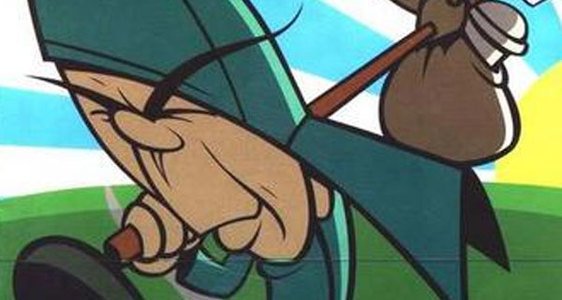
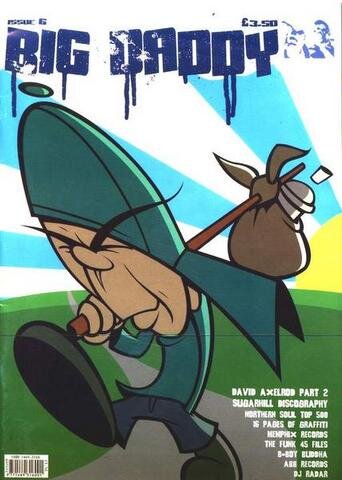
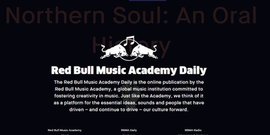
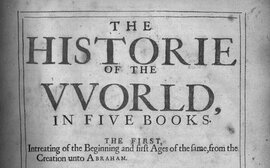
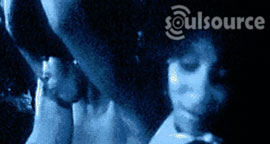

Recommended Comments
Get involved with Soul Source